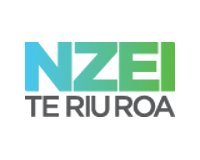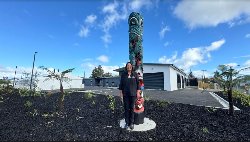Iwi smoking on the decline but still more work to be done
Iwi smoking on the decline but still more work to be done
According to the latest census, all
iwi have seen a significant drop in their numbers of regular
smokers with an average decrease of around nine to ten per
cent from 2006-2013.
81 per cent of Māori now live in
urban areas, at least one-third live outside their tribal
influence, more than one-quarter do not know their iwi or do
not choose to affiliate with it, and at least 70 per cent
live outside the traditional tribal territory.
Ngā Puhi, New Zealand’s largest iwi saw the biggest drop in numbers of regular smokers with a decrease of 9.9% followed closely by Ngāti Tuwharetoa and Tūhoe. Iwi with the smallest numbers of regular smokers include Ngāi Tahu, Ngāti Maniapoto and Ngā Puhi. All three of these iwi sit under the national smoking rate for Māori of 32.7%. Conversely, iwi like Tūhoe (38.2%) Waikato, Ngāti Maniapoto and Ngāti Tuwharetoa currently sit above the Māori national average. The national average is 15%, which means Māori are smoking at just over double the rate of the general population.
Maybe unsurprising, as the number of regular smokers has declined, the number of Māori who identify as “never smokers” or smokefree has increased. Being smokefree and tobacco free is now the norm for all iwi. “A thriving iwi needs thriving descendants. A focus on iwi health will be a major focus” says Naida Glavish spokesperson Whānau Ora Iwi Leaders Forum.
In 2010 Ngāti Kahungunu, the third largest tribe in New Zealand, became the first iwi to develop a comprehensive strategy to rid tobacco from the lives of its people. The Strategy incorporates a blend of both tobacco control strategies such as using cessation services and traditional cultural lore (tikanga) that will remove not only the use of tobacco products but also the carrying of tobacco on to sites such as marae and wāhi tapu (sacred sites). The Ngāti Kahungunu strategy is also included as part of the Hawkes Bay District Health Board’s tobacco free policy.
More recently, in 2014 the Iwi Leaders Forum
committed to the Tupeka Kore 2025 goal. “The networks and
relationships that iwi have mean they are able to reach
whānau at a level government agencies cannot” says Zoe
Martin-Hawke.
ENDS


 NZEI: Ministry Of Education Cuts Will Disproportionately Affect Pasifika
NZEI: Ministry Of Education Cuts Will Disproportionately Affect Pasifika Day One Hapai te Haeata: Call To Action For Young Filmmakers Against The Backdrop Of Funding Cuts
Day One Hapai te Haeata: Call To Action For Young Filmmakers Against The Backdrop Of Funding Cuts Toyota New Zealand: Three Races For Top Three To Decide TR86 Title
Toyota New Zealand: Three Races For Top Three To Decide TR86 Title Wellington City Council: Wellington Is All Action Stations For The Faultline Ultra Festival
Wellington City Council: Wellington Is All Action Stations For The Faultline Ultra Festival Melanie Allison: Local Playwright Casts A Spell Over Hamilton
Melanie Allison: Local Playwright Casts A Spell Over Hamilton Te Kohao Health: New $12M Wellness & Diagnostic Centre Opens In Hamilton ‘Disrupting The Historic Continuum’ For Māori
Te Kohao Health: New $12M Wellness & Diagnostic Centre Opens In Hamilton ‘Disrupting The Historic Continuum’ For Māori